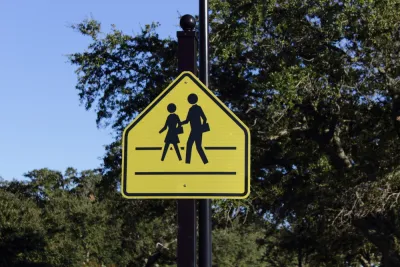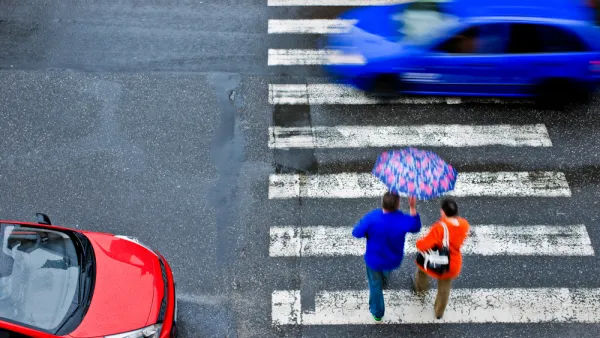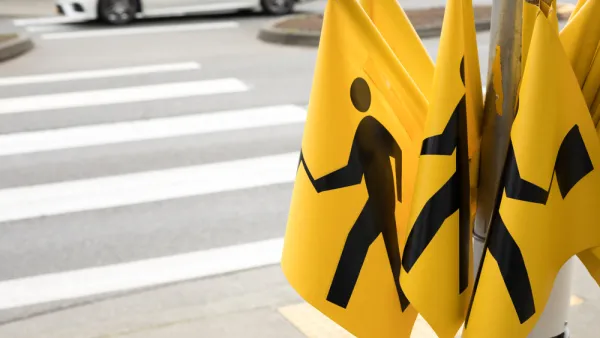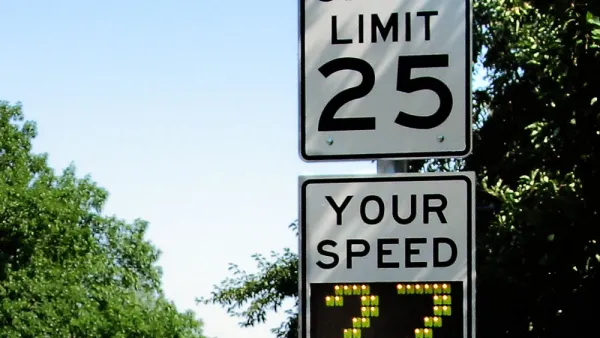The Insurance Institute for Highway Safety released a study on May 8 that attributes the increased number of pedestrians killed in part to road design that allows for higher speeds, fewer intersections and pedestrian crossings and more SUVs.

Nearly 6,000 pedestrians, the most since 1990, "were killed in 2016, up 46 percent from 2009, when such deaths were at a low point, the Insurance Institute for Highway Safety (IIHS) said in a report issued Tuesday," reports Fredrick Kunkle for The Washington Post on May 8. By contrast, total traffic fatalities increased 11 percent over the same period.
The report — which analyzed federal crash data from 2009 to 2016, along with details related to the type of roadway, vehicle and other factors — says 5,987 pedestrians died in crashes in 2016, or about 16 percent of all traffic deaths.
The Governors Highway Safety Association acknowledged the IIHS report, and urged that public awareness campaigns be aimed at reducing speed and alcohol impairment. The association released their own report on Feb. 28 on pedestrian fatalities in 2017, essentially unchanged from 2016.
"The pedestrian deaths occurred mostly when it was dark and mostly on roads designed to funnel urban or suburban traffic onto freeways, the institute says," continues Kunkle.
The crashes generally occur where there are no intersections or poorly designed crosswalks that tempt pedestrians to dash across multiple lanes of swiftly moving vehicles. The crashes often involved SUVs or vehicles with a lot of horsepower, which suggests that many of the crashes also involved excess speed.
SUVs are implicated in another manner, by having a higher and more vertical front end, according to the status report on the study.
Finally, vehicle design changes could help lessen the severity of crashes, especially when it comes to SUVs. These make up an increasingly large percentage of registered vehicles, and previous studies have found that SUVs, pickups and vans are associated with a higher risk of death or severe injury to pedestrians.
Such vehicles have higher and often more vertical front ends than cars and are more likely to strike a pedestrian in the head or chest. Changes in the front-end design of these vehicles could help lessen the severity of injuries when they strike pedestrians (see "Softer vehicle fronts and pedestrian detection systems could reduce pedestrian deaths, injuries," Dec. 30, 2013).
The three-minute IIHS video, narrated by IIHS President David Harkey, is extremely informative and highly recommended for those working to reduce pedestrian fatalities. Final words go Harkey:
Understanding where, when and how these additional pedestrian crashes are happening can point the way to solutions. This analysis tells us that improvements in road design, vehicle design and lighting and [automated] speed limit enforcement all have a role to play in addressing the issue.
Click here to access the report.
FULL STORY: Pedestrian deaths soar 46 percent, insurance group finds

Analysis: Cybertruck Fatality Rate Far Exceeds That of Ford Pinto
The Tesla Cybertruck was recalled seven times last year.

National Parks Layoffs Will Cause Communities to Lose Billions
Thousands of essential park workers were laid off this week, just before the busy spring break season.

Retro-silient?: America’s First “Eco-burb,” The Woodlands Turns 50
A master-planned community north of Houston offers lessons on green infrastructure and resilient design, but falls short of its founder’s lofty affordability and walkability goals.

Test News Post 1
This is a summary

Analysis: Cybertruck Fatality Rate Far Exceeds That of Ford Pinto
The Tesla Cybertruck was recalled seven times last year.

Test News Headline 46
Test for the image on the front page.
Urban Design for Planners 1: Software Tools
This six-course series explores essential urban design concepts using open source software and equips planners with the tools they need to participate fully in the urban design process.
Planning for Universal Design
Learn the tools for implementing Universal Design in planning regulations.
EMC Planning Group, Inc.
Planetizen
Planetizen
Mpact (formerly Rail~Volution)
Great Falls Development Authority, Inc.
HUDs Office of Policy Development and Research
NYU Wagner Graduate School of Public Service




























